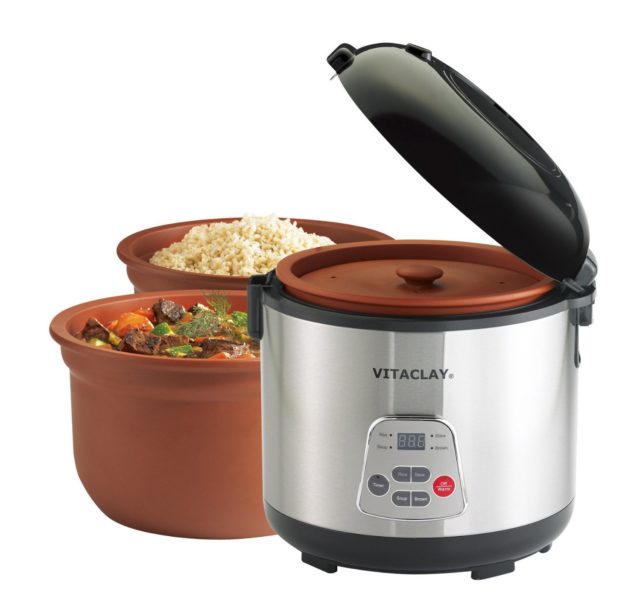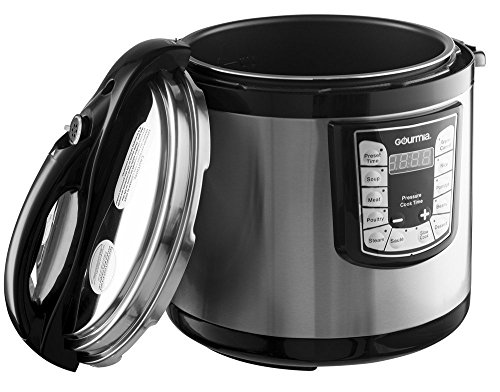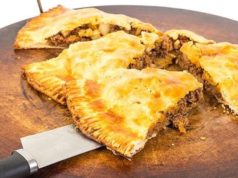
Technology has significantly transformed our way of cooking. The evolution of new kitchen machines and the connective capabilities that accompany them have not only made the cooking process simple but enjoyable as well. You now have a broad range of extremely efficient and reliable kitchenware appliances, including tea kettles, electric ovens, deep fryers, Espresso coffee machines, microwaves, pressure cookers, corn roaster and rice cookers among others at your disposal. It is also worth mentioning that the technology advancements allow chefs to regulate and monitor kitchenware devices through their smartphones.

Arguably, the introduction of rice cookers is one of the critical improvements technology offered to the cooking enthusiasts. Rice cooking had traditionally been an activity which demanded utmost attention to ensure proper cooking. However, with a rice cooker at your disposal, you’ll prepare your rice with little supervision.
See Also: Best Oven Mitts: Great Way To Stay Safe In The Kitchen
So what is a rice cooker?
Typically, a rice cooker is an efficient and compact countertop appliance specifically designed to cook relatively larger quantities of rice with minimum supervision. It consists of a heating element, a thermostat control as well as a non-stick bowl. It is widely believed that the first rice cooker was manufactured by Toshiba, a Japanese firm in 1955. As its popularity grew, other global companies joined the fray, adding eye-catching innovations that enhanced the already-available features and abilities. A rice cooker uses a thermocouple that senses the amount of temperature inside the inner pot and switches off the heating element when the inner pot hits above the expected boiling temperature. The heating element only remains on as long as there is liquid in the pot that has not been changed to steam.

How should you use your rice cooker?
Many individuals who are familiar with rice cookers are of the opinion that operating them is a no-brainer. These appliances are easy to operate, and this implies that you don’t need any special instructions to use one. Even though this statement is true, there are apparently a few tricks and tips which if you don’t master, can make a huge difference between producing well-cooked rice and merely delicious rice. So in this section, let’s explore some of the tricks you need to equip yourself with if you want to cook the most delicious rice out there. Peruse through and enhance your knowledge.
Begin by checking your user manual.
Even though the tips provided in this particular post are reasonably general and universal for nearly every rice cooker, it would still be an excellent idea to dig out to your user manual and examine the given instructions before you proceed. Many rice cookers prefer the ration of one cup water to every single cup of rice. Of course, these devices can vary regarding their efficiency, and this implies that you may be needed to carry out some trial and error to examine what works best with your appliance. Begin with the standard ratio as well as the technique given in this article and adjust after that, based on your previous experience with your cooker. It is imperative to note that certain models come with a cup designed to help you measure both the amount of rice and water.
See Also: 12 Best Toasters That Can Bring Dead Bread Back To Life Again
The procedure:
• First, measure the required amount of rice based on the number of your guests.
• Thoroughly rinse your rice in a sieve under running water. This is extremely beneficial since it ensures that the excess starch and bran are all eliminated. It also makes your rice less sticky.
• After this, put your rice inside the inner pot and spread them evenly around the bowl to ensure perfect cooking. Add the ideal amount of water. You can use the measuring cup if available.
• Place the inner pot into your rice cooker. You can now close the lid and press it down until the latch snaps shut.
• Connect your cooker to the power source. Depress its lever to the COOK setting. The cooking light will turn on after this.
• If you did everything perfectly up to this moment, your rice would continue cooking until the switch automatically moves to the WARM setting. The warm lights will turn on. You should not open the lid, but, keep it closed for about ten minutes. If you didn’t know, this resting time is essential because it makes your cooked rice fluffier and with distinct grains. You can now serve your delicious meal.
Some of the latest rice cookers come equipped with heat insulating and warming functionality. When your rice is fully cooked, the system automatically switches to KEEP WARM cycle thus preventing the food from getting overcooked.

The Bottom Line.
If you’ve never used a rice cooker before, you don’t have to get worried. These devices come with an easy-to-read user manual. For efficient and perfect cooking, kindly follow the above-provided cooking tips.




